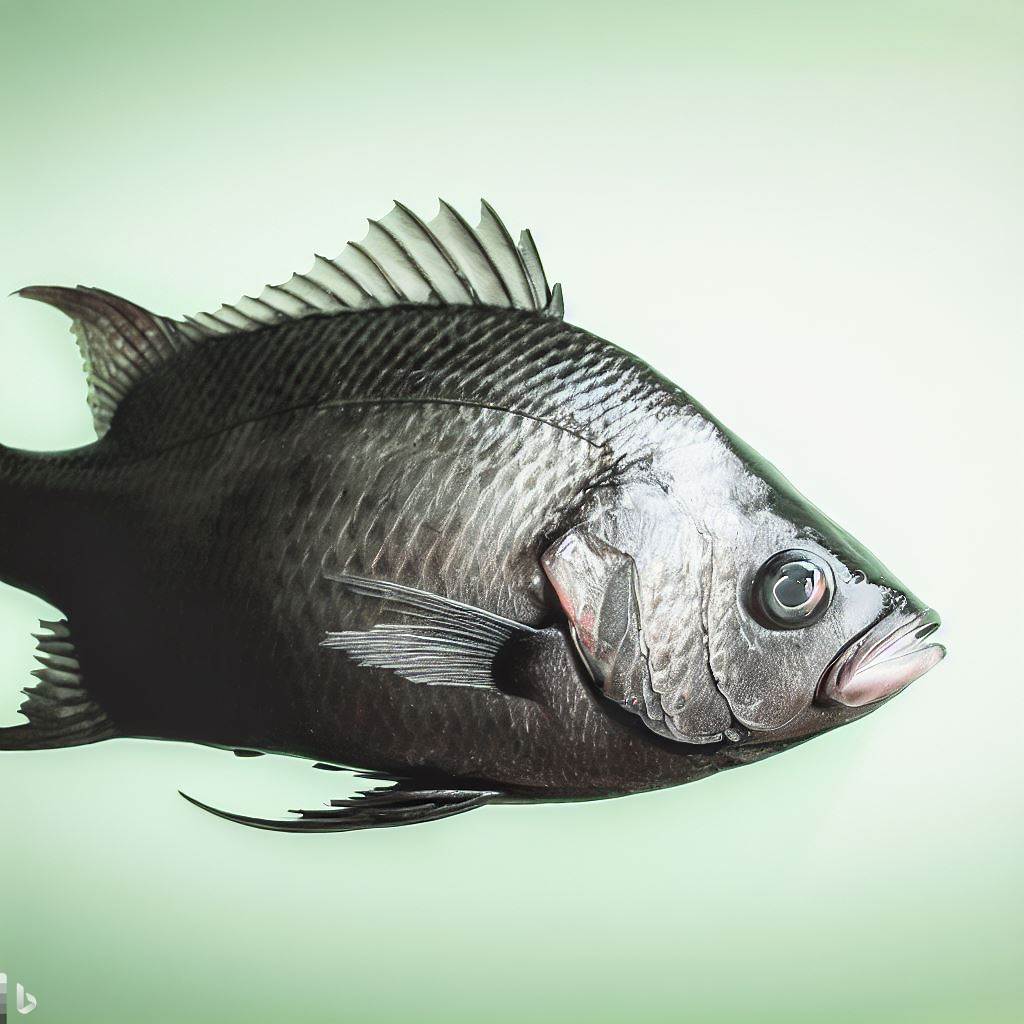Black snapper

In the vast world of aquatic life, the Black snapper (Lutjanus fulviflamma) stands out as a remarkable fish species. Also known as the Black and Gold snapper, it belongs to the family Lutjanidae, which comprises a diverse range of snappers. With its distinct features and fascinating behavior, the Black snapper has captivated the attention of ichthyologists and fishing enthusiasts alike.
Anatomy and Physical Characteristics
The Black snapper exhibits a robust and streamlined body, which allows it to maneuver gracefully through the water. On average, it reaches a length of 50 centimeters (19.7 in), although specimens measuring up to 70 centimeters (27.6 in) have been documented. These fish can weigh anywhere from 1 to 3 kilograms (2.2 to 6.6 lbs). With a lifespan of up to 25 years, the Black snapper boasts impressive longevity in its underwater habitat.
The distinguishing feature of the Black snapper is its striking coloration. The upper body displays a rich dark-brown to black hue, while the lower portion exhibits a vibrant gold color. Additionally, this species showcases a well-defined lateral line that extends from the gill cover to the caudal fin. Such intricate physical characteristics contribute to the unique allure of the Black snapper.
Optimal Fishing Times for Black snapper
To optimize the chances of a successful catch, understanding the best fishing times for Black snapper is crucial. These fish exhibit specific preferences based on the time of day, weather conditions, and season. By aligning fishing activities accordingly, anglers can increase their chances of encountering this prized species.
During the spring months, Black snapper tend to be most active during early mornings and late afternoons. As the water temperature ranges from 70 to 80°F (21 to 27°C), these conditions are ideal for their feeding patterns. In the summer, Black snapper become more active during the early evening hours, particularly when the water temperature hovers between 80 and 90°F (27 and 32°C). Autumn brings a shift in their behavior, with a preference for midday fishing when the water temperature is around 75 to 85°F (24 to 29°C). Finally, during winter, Black snapper exhibit reduced activity due to colder temperatures, but they can still be caught during the warmest parts of the day.
Distribution of Black snapper
Black snapper are widely distributed throughout the tropical and subtropical regions of the world's oceans. They can be found in the Indian Ocean, the Pacific Ocean, and the Red Sea. Specifically, their range extends from the eastern coast of Africa, including the waters around Madagascar and the Seychelles, to the western Pacific, encompassing countries such as Indonesia, Australia, and Papua New Guinea. The Black snapper's ability to adapt to various marine environments contributes to its extensive distribution.
Spawning Behavior of Black snapper
The Black snapper engages in spawning activities during specific periods, influenced by water temperature and seasonal changes. Typically, the temperature range of 77 to 86°F (25 to 30°C) signals the onset of the spawning season. This period often coincides with the spring months, when water temperatures reach these optimal levels. The female Black snapper releases her eggs into the water column, and the male fertilizes them externally.
The eggs, commonly referred to as roe, undergo a maturation process that lasts approximately 24 hours. Once hatched, the larvae embark on a journey in ocean currents, gradually developing into juvenile Black snapper. This intricate reproductive cycle ensures the continuity of the species and contributes to its population sustainability.
Dietary Preferences of Black snapper
Black snapper are voracious predators, primarily preying upon smaller fish, crustaceans, and mollusks. Their diet consists of various marine organisms, including anchovies, sardines, shrimp, and crabs. This species employs an ambush strategy when hunting, patiently lying in wait for unsuspecting prey to approach before swiftly capturing it. The Black snapper's predatory nature helps control the populations of smaller fish and other aquatic organisms, maintaining a balance within the ecosystem.
Ecosystem Importance
Black snapper plays a vital ecological role within marine ecosystems. Its position as a top predator helps regulate the populations of prey species, preventing overpopulation and maintaining biodiversity. By controlling the abundance of smaller fish and other organisms, Black snapper contributes to the overall health and stability of aquatic habitats.
Furthermore, the Black snapper serves as a valuable resource for both commercial and recreational fisheries, providing sustenance and enjoyment to countless individuals. Its popularity among anglers underscores its economic significance, making it a valuable asset for coastal communities and the fishing industry.
FAQs
Q: Can Black snapper be kept in home aquariums?
A: Black snapper is not suitable for home aquariums due to its large size and specific habitat requirements.
Q: Are Black snapper caught for both commercial and recreational purposes?
A: Yes, Black snapper is sought after by both commercial fishermen and recreational anglers.
Q: What is the average lifespan of a Black snapper?
A: Black snapper can live up to 25 years in their natural habitat.
Q: Are Black snapper endangered?
A: Currently, Black snapper populations are not classified as endangered, but conservation efforts are important to maintain their numbers.
Q: What is the legal size limit for catching Black snapper?
A: The legal size limit for Black snapper varies depending on local fishing regulations. It is important to adhere to these regulations to promote sustainable fishing practices.


